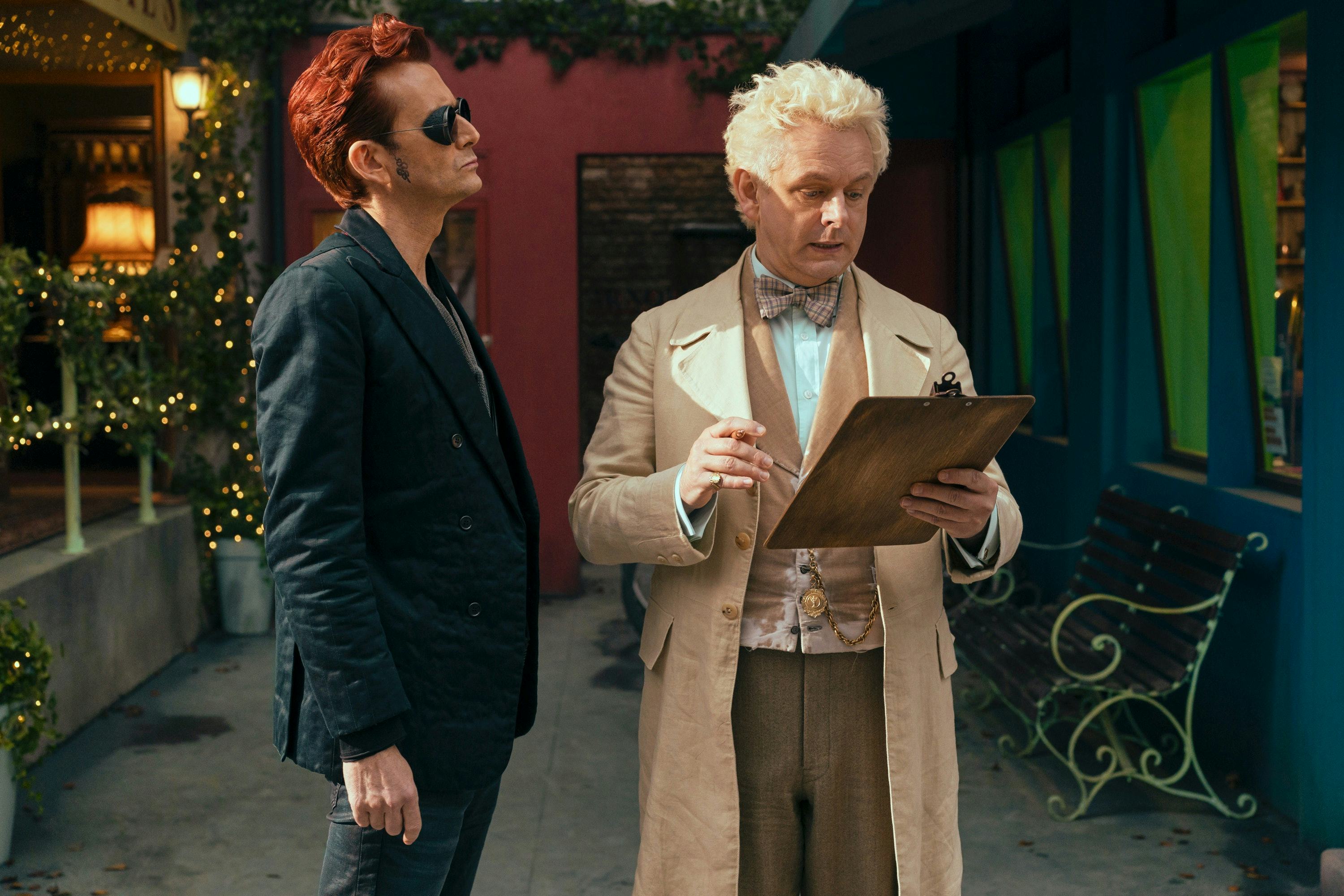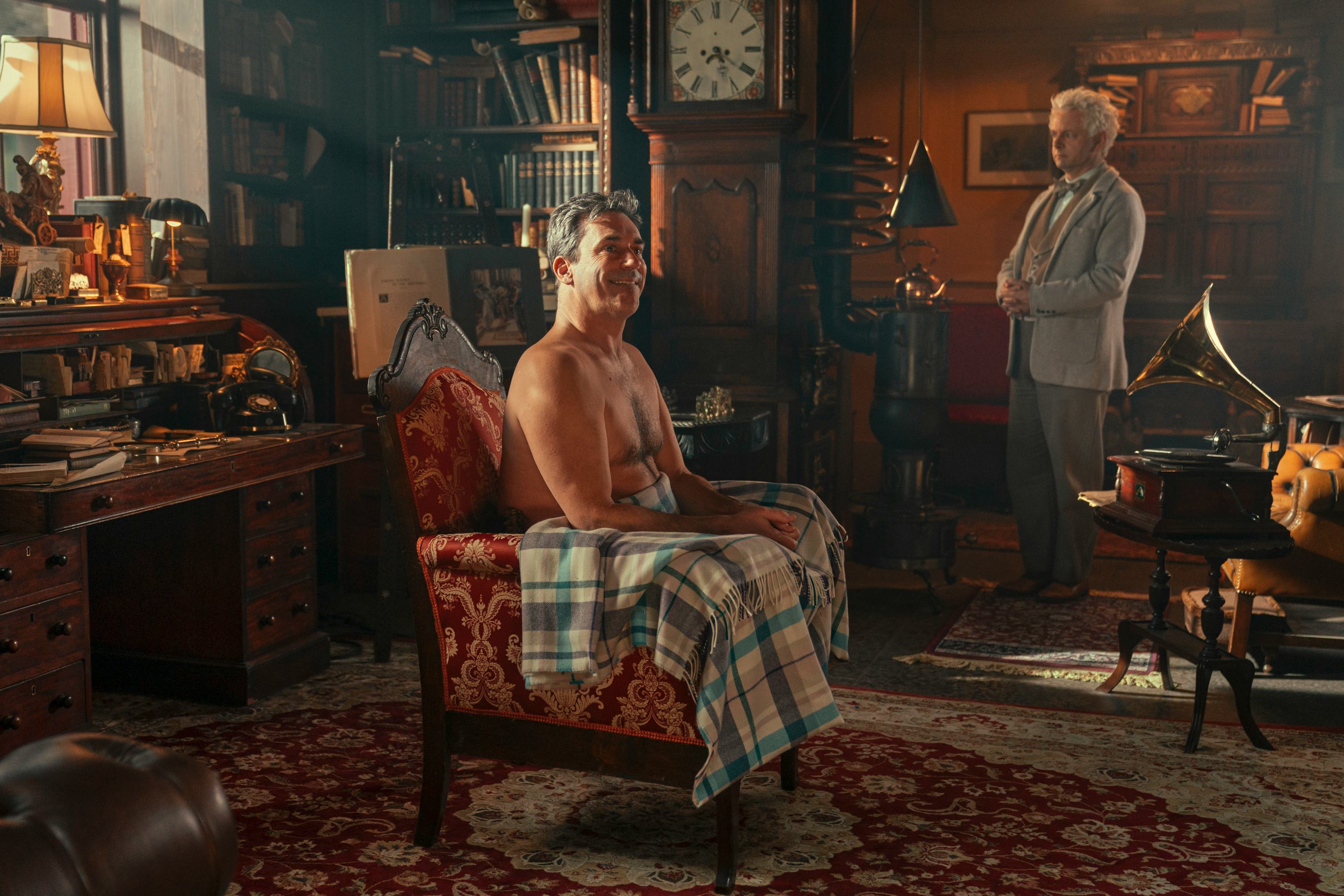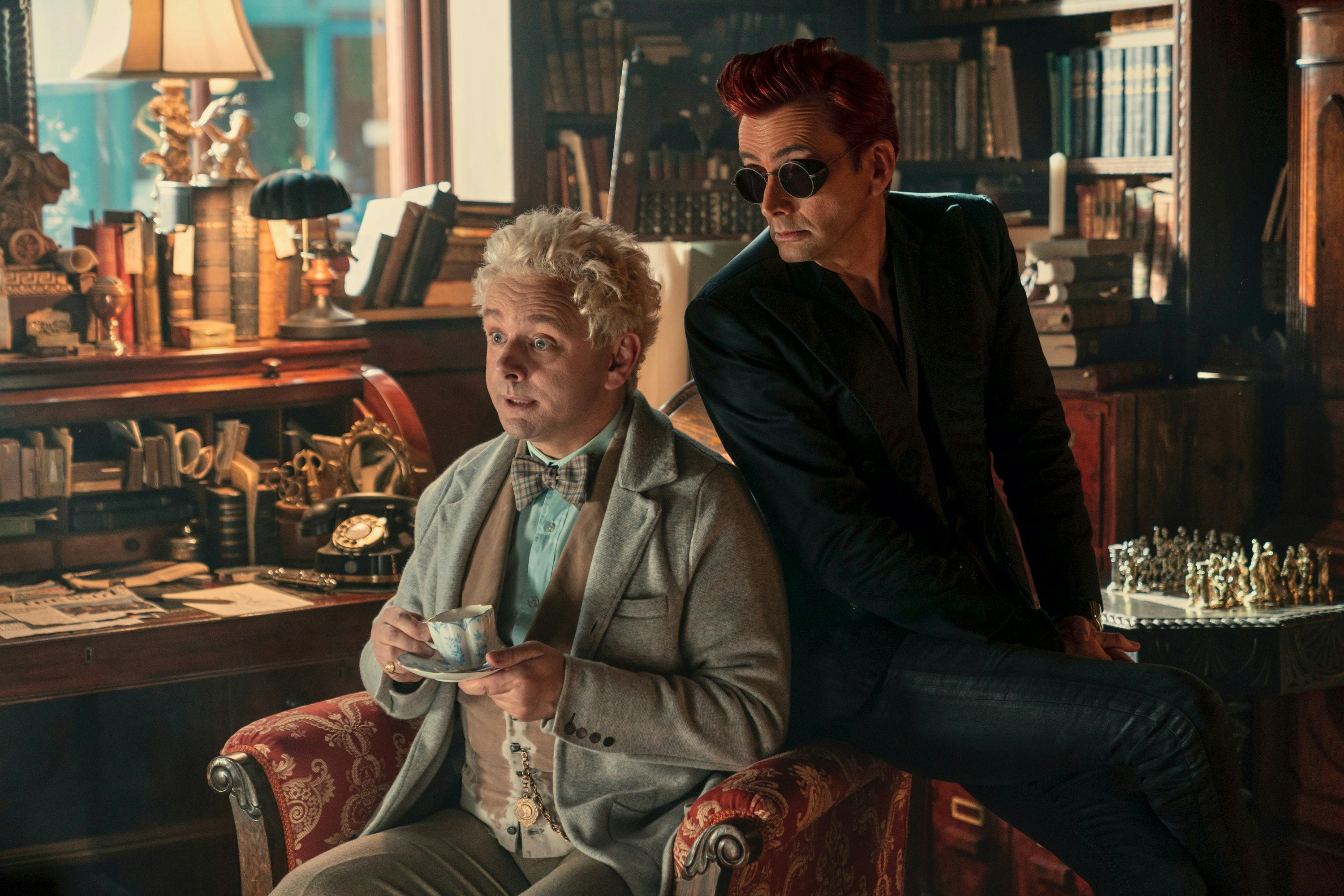
Good Omens started with the end of the world.
Season 1 of the Prime Video series, based on the book by Terry Pratchett and Neil Gaiman, followed an angel and a demon as they joined forces to stop the apocalypse from destroying the Earth they’ve come to actually enjoy.
But after that crisis was averted, the question remains: what comes next? Season 2 of the series pulls a Game of Thrones and forges its own path beyond the source material. But unlike the HBO show’s divisive final seasons, Good Omens pulls this off to great results, introducing more adventures, more hijinks, and more material for fans to obsess over. If Season 1 was an epic thriller, Season 2 is a cozy mystery that doubles down on the rich character moments that made the first season such a compelling watch.
Season 2 of Good Omens is centered around a baffling mystery: Archangel Gabriel (Jon Hamm) appears at Aziraphale’s (Michael Sheen) doorstep, completely naked and without any memory of who he is and what’s going on. A panicked Aziraphale turns to his oldest friend Crowley (David Tennant) to help him hide the angel from both ends of the supernatural spectrum until they can figure out what’s going on.

But unlike the first season, this isn’t the only storyline afoot in the series. Season 2 contains multiple “minisodes” that essentially act as bonus Arizaphale and Crowley stories through different time periods. They are completely unrelated to the main story, but do something even better than advance the plot: they enrich the dynamic between Aziraphale and Crowley. The angel and demon’s endearing millennia-long relationship that previously relied purely on the chemistry between Tennant and Sheen — as well as small glimpses of their meetings throughout the centuries — but these episodic adventures finally fills in the gaps by going back to the very beginning, to Aziraphale and Crowley’s first meeting. Good Omens Season 2 effectively refocuses the show from being an apocalypse satire to a character comedy; one that beautifully highlights the natural chemistry between Tennant and Sheen.
But Tennant and Sheen’s dynamic wouldn’t work so well if it weren’t for the show’s terrific writing. The original book was known for its particularly acerbic writing, and following it up is a tall order, especially after the death of Terry Pratchett. Thankfully, Good Omens Season 2 pairs original writer Gaiman with one of the most clever — and witty — writers working today: John Finnemore. Finnemore is best known for creating Cabin Pressure, a BBC radio sitcom that starred a young Benedict Cumberbatch, and has been crafting comedy ever since. Looking back, some of his radio sketches actually sound like conversations between Arizaphale and Crowley, so it’s no wonder he slid into the voices of these two seamlessly.
Gaiman and Finnemore clearly understood what fans wanted from a second season: more Arizaphale and Crowley. That’s delivered in spades, and the crackling chemistry between Tennant and Sheen allows for the dialogue to feel so organic and genuine, the episodes blur together into one delightful romp into another.

Season 2 is also more of an ensemble piece, and the rest of the cast builds onto the strong foundation its leads created. Jon Hamm’s amnesiac himbo character is the perfect rejection of his Don Draper typecasting, while Miranda Richardson returns in a different role as the demon Shax. But it’s series newcomers Nina Sosanya and Maggie Service, as Arizaphale’s lovelorn shopkeeper neighbors Nina and Maggie, who make the ensemble sing.
After the end of the world, there’s no real way to heighten the action. So Gaiman and Finnemore instead strip the story down to its bare bones and explore just what made Good Omens fun to watch in the first place: two characters with such strong conflicting yet irresistible energies, worldbuilding that takes religious canon and turns it on its head, and the sweet emotional core at the center of it all.
There doesn’t need to be an apocalypse in order to make a great story. In fact, sometimes all you need are two people with such an interesting dynamic that whatever they do makes must-see TV.







